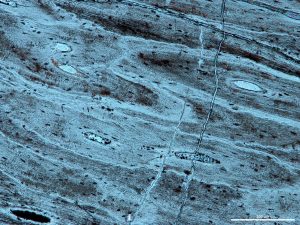
The rib of a long-necked, plant-eating dinosaur that lived 195 million years ago has yielded what may be the oldest remains of soft tissue ever recovered, scientists said Tuesday.
The find promises a chance to extract rare clues about the biology and evolution of long-extinct animals, a team wrote in the journal Nature Communications.
Such information is mostly missing from preserved hard skeletons, which form the bulk of the fossil record.
“We have shown the presence of protein preserved in a 195 million-year-old dinosaur, at least 120 million years older than any other similar discovery,” study co-author Robert Reisz of the University of Toronto Mississauga, told AFP.
“These proteins are the building blocks of animal soft tissues, and it’s exciting to understand how they have been preserved,” he added.
Reisz and a team scanned a rib bone of Lufengosaurus, a common dinosaur in the Early Jurassic period. Fully grown, these lizards measured about eight metres (26 feet).
The researchers used a photon beam at the National Synchrotron Radiation Research Center in Taiwan to examine the insides of the bone, specifically its chemical contents.
They found evidence of collagen proteins within tiny canals in the rib and concluded they were “probably remnants of the blood vessels that supplied blood to the bone cells in the living dinosaur.”
Most previous studies had extracted organic remains by dissolving away other parts of the fossil, the team said.
With the synchrotron method, this is not necessary, and even older remains may be uncovered without damaging dinosaur bones in future.
Does it bring us any closer to recovering DNA from which dinosaurs may one day be cloned?
“No, that is still fantasy,” said Reisz.
The previous oldest find of suspected red blood cells and collagen fibres was reported in 2013, in dinosaurs that lived about 75 million years ago.
Proteins and other organic remains usually decay soon after an animal dies. During fossilisation, the space they occupied within bone is filled by mineral deposits carried by groundwater.
Finding fossilised soft tissue is very rare indeed.
Reference:
Yao-Chang Lee et al. Evidence of preserved collagen in an Early Jurassic sauropodomorph dinosaur revealed by synchrotron FTIR microspectroscopy, Nature Communications (2017). DOI: 10.1038/ncomms14220
Note: The above post is reprinted from materials provided by AFP.










